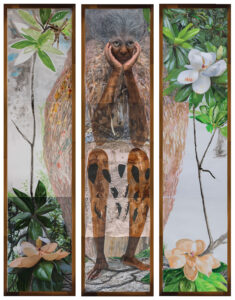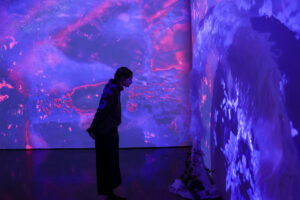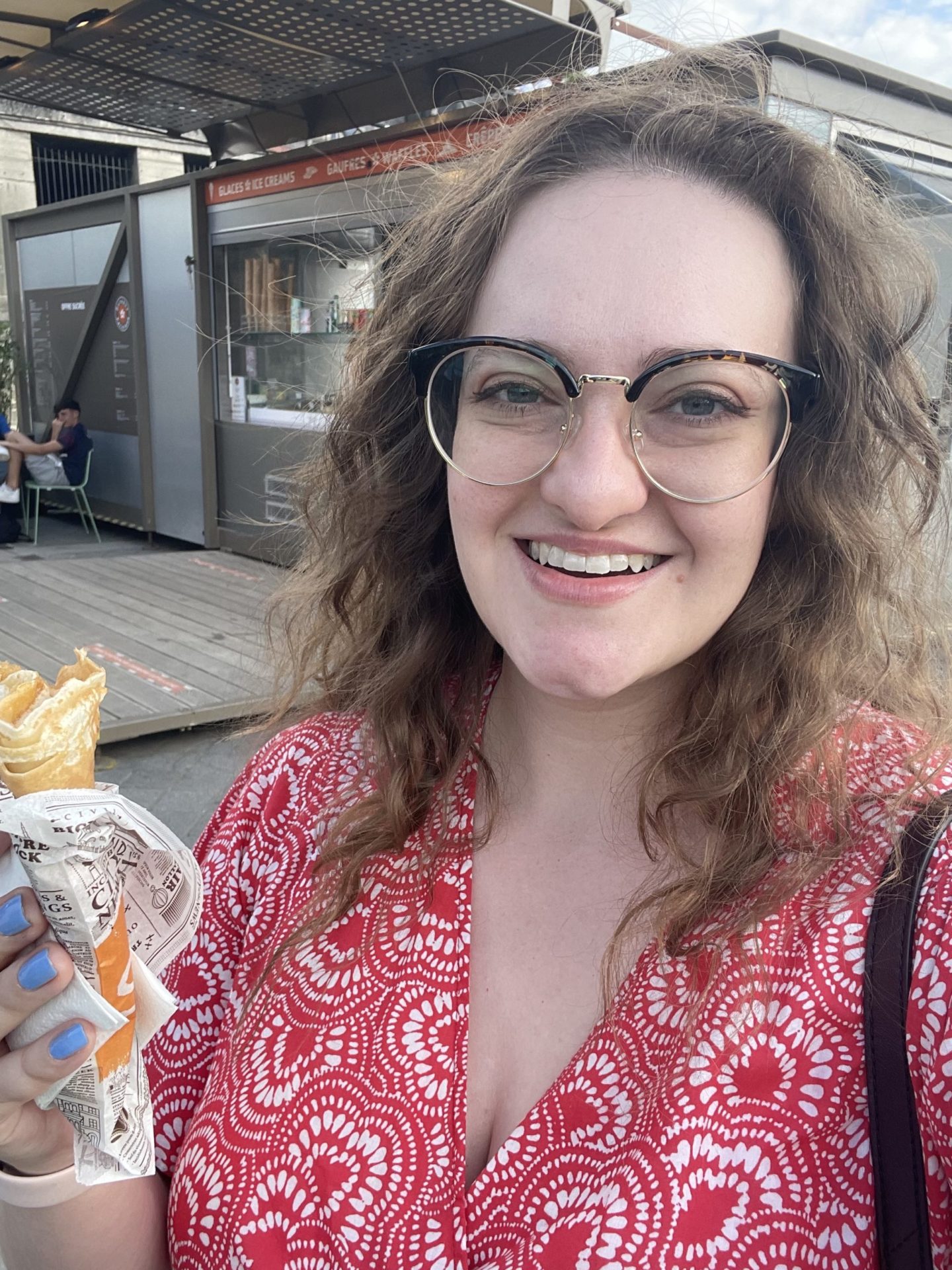A ‘Portal’ to ‘Behold’ at the Frist

The current exhibitions at the Frist Art Museum are María Magdalena Campos-Pons: Behold and LaJuné McMillian: The Portal’s Keeper—Origins. These are separate exhibitions; however, they are connected in their intent to shine a light on the oppression of black people, both past and present. María Magdalena Campos-Pons was born in 1959 in Cuba and came to the United States in 1991. Her art is greatly influenced by her experiences in Cuba as well as the histories of her Yoruba and Chinese ancestors, who came to Cuba as enslaved and indentured workers. Some of her work also more broadly reflects the experience of the immigrant. Behold spans nearly four decades of the artist’s work in photography, installation, video, painting, and performance.
What is truly incredible about this collection is how Campos-Pons will not let herself be limited to one art form. Instead, she embraces the ability of different mediums to show different things, or to allow us to feel different things. In Behold, we are invited to behold those that are oppressed, overlooked, or forgotten and we are shown, in turn, how they view the world. The first work, front and center, is Secrets of the Magnolia Tree, a huge triptych self portrait of Campos-Pons as part of a magnolia tree. She is in the shape of an owl in a magnolia tree. Her eyes are big and serious, and ever watchful, her head is resting in her hands and her elbows rest on her knees. Her feet are roots of the tree (roots is a theme in her art). One cannot look without thinking of the history and symbolism of the tree in this region. As a tree that only grows in the south, one must imagine the beautiful moments and the atrocities that the Magnolia has witnessed in these lands. In Billie Holiday’s 1939 song “Strange Fruit”, for instance, written by New York schoolteacher and communist activist Abel Meeropol to condemn the practice of lynching, the magnolia flower was associated with lynchings and the Southern United States:
Pastoral scene of the gallant south
The bulging eyes and the twisted mouth
Scent of magnolias, sweet and fresh,
Then the sudden smell of burning flesh.
In another combination of beauty and tragedy, Campos-Pons has works dedicated to Breonna Taylor and George Floyd. Untitled (Flowers) is a beautiful painting of flowers and eyes (the eyes are like spots on butterfly wings) that is part of the series The Rise of the Butterfly which remembers Breonna Taylor. She was shot and killed after police officers from Louisville Metro Police Department forced entry into her home in the middle of the night. Her tragic death is something Campos-Pons will not turn away from. She witnesses it, just as her figure in the magnolia tree does, and invites the audience to bear witness as well. In a work that depicts the breath leaving George Floyd’s body, Campos-Pons thinks of his last words, “I can’t breathe,” and turns them into the breath of creation: the re-invigoration of the Black Lives Matter Movement.
One of my favorite collection of works by Campos-Pons was a trilogy of installations titled: History of a People Who Were Not Heroes. It is composed of A Town Portrait, Spoken Softly with Mama, and Meanwhile the Girls Were Playing. In these we see the strength of the people in Matanzas, Cuba, where Campos-Pons was raised. We can appreciate how black Cubans have survived and thrived in their day to day lives. Even if their names will not be written down in history, we honor them.
This collection of work is so expansive, that I haven’t even touched on half of it. There is much to see and all of it is meaningful and moving.

LaJuné McMillian was present at my tour of their work and spoke to us about growing up as the only black child in their neighborhood in New Jersey. They turned to art as a way to heal from traumatic experiences in their childhood. As a child McMillian was an avid figure skater, and their interest in Black movement intensified during their time as the Director of Figure Skating in Harlem. They also inaugurated the Black Movement Library, an online database of avatars generated from recordings of Black performers. McMillian explained to us that while this work was important, they realized that they were carving out spaces for Black performers broadly, while never carving out a space just for them. The Portal’s Keeper—Origins features the three-part installation Spirit and Child, a conversation of healing and gratitude between avatars called the Child and the Spirit Guide, created using motion-capture and 3D-modeling software. This immersive video covers the walls, bathing the audience in glowing lights, drawing us in. McMillian hopes to provide healing for the inner child of people of color that have experienced trauma and to give hope to children currently questioning their place in the world. A piece of the Spirit’s response: “Under the thick wraps of dark skin. Allow me to bury you in the love of your fullest self.”
In another room, a series of holographic self-portraits focuses on the artist’s interest in bodily movement as an expression of liberation. They are small framed images that each represent McMillian. There is also an interactive station will allows visitors to enter their own prayers which the artist stated would be used to in their next project: creating an AI out of the prayers of the many. The way McMillian uses technology is bold and unique, as we are often told that technology and art are separate. McMillian shows us how technology (something created by humans) can be used to make incredible art. This is their first exhibition at the Frist, but I don’t believe it will be the last and I look forward to their next creation.
These exhibitions will be on display at the Frist until January 5th, 2025, so you have plenty of time to go see them for yourself!



